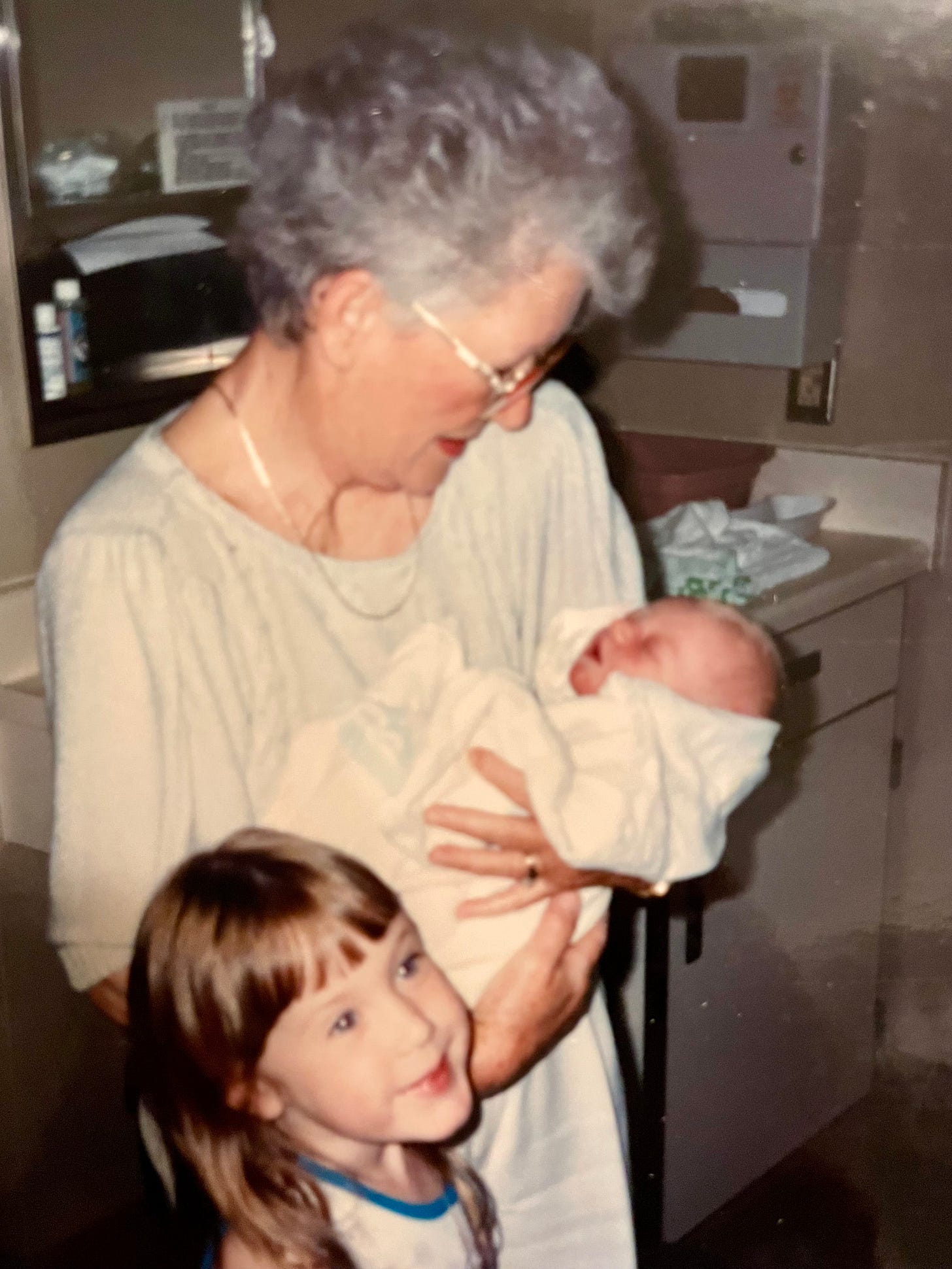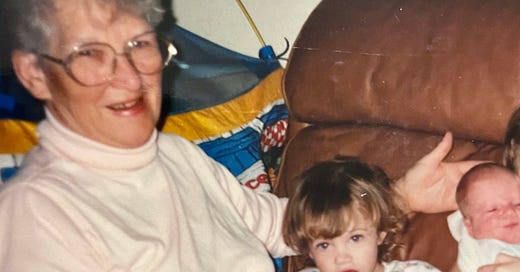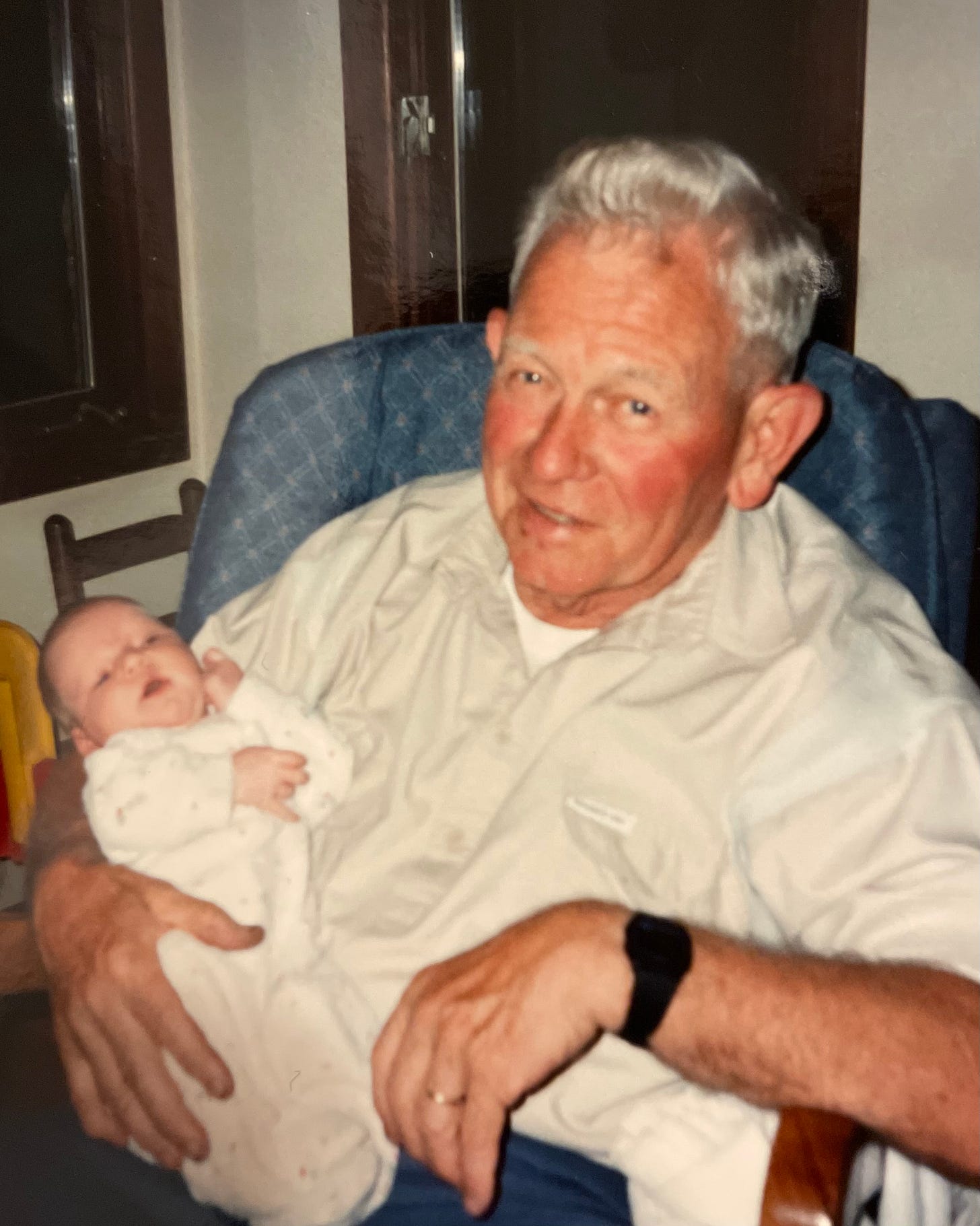Food, Memory, and Identity: Searching for myself in a slice of cheese
My Grandmother's Cheeseboard
***This week’s post is a short break from my series on the World Cheese Awards, which will recommence next time. Cheese is the secondary focus of this post, with family center stage. Ultimately, this is a page in the history of my journey to cheese, but if you would like to skip this week in preference of more technical cheese posts, I will see you next time!***
Today at work I had to write a recipe for a cheese and fruit tray. Yes, I realize that sounds silly, but this is my job currently. I knew going in that the cheese adorning the tray was going to hurt my heart a little—industrial, pre-cut cubes coated in anti-caking agent –but it also brought back a wave of sad memories. This was the type of appetizer my grandma would have set out during family gatherings. Whether Christmas, Easter, Fourth of July, or my father’s and grandfather’s shared birthday, a tray of pre-cubed cheeses accompanied by fruit or a bowl of mixed nuts with a tube of fancy toothpicks—the ones with the frilly tops –made an appearance. We were never close—family animosities from long before I was born prevented that –but somehow, through cheese, I have found a connection to her.

My paternal grandmother, Nancy Louise Moss Snyder, was born and raised in Richmond, Virginia and spent her whole life in Virginia. My most vivid memories of her involve her standing barefoot in her kitchen wearing pajama shorts and a loose-fitting t-shirt, standing over the stove boiling cabbage, prepping green beans to freeze, or blanching tomatoes to can. She was the behind-the-scenes stage crew that made everything in my grandpa’s and disabled aunt’s life run smoothly. While my grandpa told and re-told long, rambling stories, she sat quietly in the recliner next to his, occasionally correcting a detail or making a face if you didn’t like what, or who, he was talking about.
When it came to food, my grandma was front and center. Everything she made was my grandpa’s favorite. Even when things went wrong, like a cake falling apart, he would still rave about it being the best thing he had ever eaten. Apparently, she made the best pineapple upside down cake, which was often requested by my grandpa to celebrate their wedding anniversary. However, it is the ever-present cheese that I remember the most of her food. This was my introduction to the concept of a cheeseboard. She would put out arranged piles of an assortment of pre-cubed cheeses with the toothpicks nearby. My father would stand over it, using his toothpick to shovel cubes into his mouth. I would methodically fill my toothpick with a cube of each type of cheese and then eat them off the toothpick like corn on the cob. I was fascinated by the perfect, uniform shape of each cube and the almost imperceptible difference in flavor between the cheeses.

As I got older, family tensions, once hidden, began to smolder openly. My grandparents got older and older. My grandpa passed away in January 2018 during my first year in grad school. During his illness, he required a tracheotomy to breathe, and spent four months unable to eat or drink anything. During visits, he would hallucinate that he had been able to eat. He waxed poetic about an ice-cold Coke-a-Cola, and he was positive we were eating hot dogs for Christmas. As a society we focus so much on eating—what we eat, how much we eat, where we eat — we cannot fathom food not being part of our lives. Eating is integral to who we are. To have it taken away, we lose part of ourselves. My grandpa was a “foodie” before his time. He was a great critic of restaurants, and he had a deep love for Limburger cheese, Swedish sausages, summer tomatoes, and my grandma.
After his death, my grandma moved in with my aunt. Visits were tense and infrequent. There were no more family gatherings or get-togethers – my aunt didn’t like them or celebrating holidays. My grandma passed away in September 2021. At the memorial service, I saw photos and heard stories about her life I never knew; like a photo of her modeling at her high school fashion show or the story of her and my grandpa revisiting places from their early dating years on their anniversary, even if those places were all gone. She was a remarkable person with a character and personality I would have liked to know. She had the same best friend for over 50 years, and, in a time before any understanding of mental disabilities, she took care of her disabled daughter.
The realization that I never knew my grandmother hurts, and, as someone who studies and understands the world through food, I articulate that pain through the loss of my culinary culture. I will never know her recipe for pineapple upside down cake or how she cooked cabbage and canned tomatoes. There is no recipe book or scrap of paper from which to start. If there is, my aunt will not let it go; through sentiment or spite, I don’t know. For someone who uses food to understand history and culture, I am lacking any clues as to my own identity. All I have are stories excavated from my and my father’s memories. Especially of those early cheeseboards.
I now make the cheeseboards for family gatherings. The cheeses are better quality, there are more accoutrements beyond nuts, and no fancy toothpicks. It is not quite the same, but it feels like a continuation of my grandmother’s legacy and gives me a glimpse of how she identified herself. This is the slice of her that I carry on; this is my inheritance.





